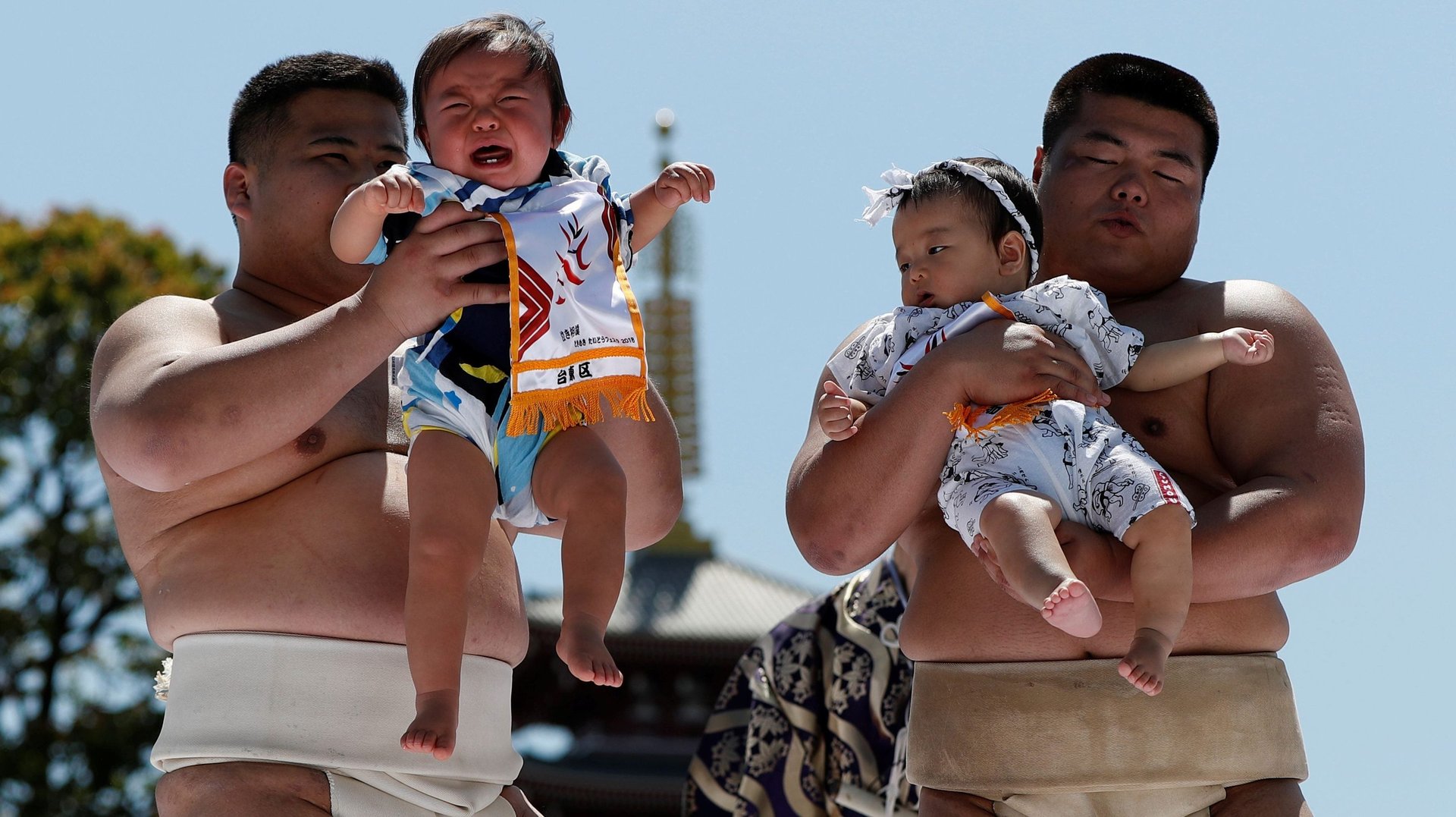Japan is making a push to stop the stigma against crying babies
A group of 13 politicians in Japan have banded together to support an unusual cause: The right of babies to cry in public spaces.


A group of 13 politicians in Japan have banded together to support an unusual cause: The right of babies to cry in public spaces.
Broadly speaking, Japan tends to be more intolerant of crying children than other cultures. The government has struggled to open enough sufficient day-care centers because some residents have blocked construction projects due to worries about the noise associated with nurseries. Meanwhile, in October 2017, All Nippon Airways, a Japanese carrier, conducted research to figure out how to stop babies from crying during takeoff and landing. And back in October 2014, a man frustrated by noise was arrested for allegedly threatening a father who came to a local day-care center to pick up his six-year-old child with a hatchet. (According to the police, the man had complained to the municipal office the day before the incident and threatened to attack the children at the daycare if the noise didn’t stop). At the less extreme end of the spectrum, it’s common for a crying baby to elicit disapproving looks—or what the Financial Times calls “the dreaded tut of disapproval”—in public spaces.
The stigma toward crying children hits mothers the hardest, particularly working mothers who cannot avoid taking their babies into busy public spaces, like subways or planes. In a September 2017 article, the Financial Times reported that some mothers were so worried that they would be judged for their crying babies that it had “affected their decision to eat out or travel at particular times.” All Nippon Airways concurred: In a statement (link in Japanese) about the project, the airline said that “parents with small children avoid traveling by airplane” because of noise concerns.
Now the push to help crying babies—and their moms—gain acceptance seems to be picking up steam. In 2016, a group of Japanese women started a grassroots campaign, the “We Love Babies Project.” The campaign encouraged Japanese people to wear stickers bearing the words Naitemo iiyo! (“It’s OK to cry!”), the better to reassure moms that a “silent majority” of their fellow citizens didn’t mind the sound of their babies’ cries. And this June, 13 Japanese politicians pledged their support for the campaign—solidifying a government-wide shift, led by prime minister Shinzo Abe, toward making Japan a more family-friendly society.
Cultural attitudes toward children and noise
There’s a specific explanation as to why Japanese culture has a particular distaste for the sound of crying babies. Because of the country’s declining birth rate, the sound tends to be more unusual. Only 946,060 babies were born in Japan in 2017, the lowest number since official records began in 1899.
In a 2014 editorial, The Japan Times wrote, “some people may get irritated by the shouts of many children simply because they are not used to their presence in the neighborhood due to the declining birthrate. They should keep in mind that they were once children and probably just as noisy.”
Perhaps because the sound of babies crying is less common in Japan, a lot of credence has been given to the idea that crying babies are an entirely avoidable phenomenon. Japanese babies are among the world’s least-likely to cry, along with Danish and German babies, and even Japanese candy companies market their products to moms with videos designed to make their babies stop crying.
But that mentality perpetrates a harmful myth: Namely, that a crying baby is the mother’s fault. Particularly in the first few months of life, babies sometimes lack the ability to stop crying. A 2016 Brazilian study found that “excessive crying is a common symptom in the first three months of life and leads to approximately 20% of pediatric consultations.” And the stress experienced by mothers who feel pressure to stop their babies’ cries could end up being even more harmful to kids than the crying itself: A 2014 study showed that crying frequency was associated with maternal anguish, especially in middle- to low-income countries.
As any mother who’s faced glares over a crying baby on a plane or bus can attest, shaming parents over an infant’s tears is useless in terms of reducing noise—and actively harmful for the adults. Perhaps the new political push for the right to cry will help more moms feel comfortable using public spaces in peace.
This reporting is part of a series supported by a grant from the Bernard van Leer Foundation. The author’s views are not necessarily those of the Bernard van Leer Foundation.